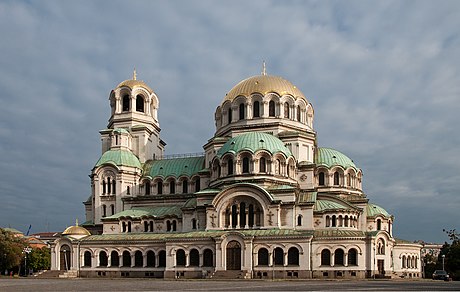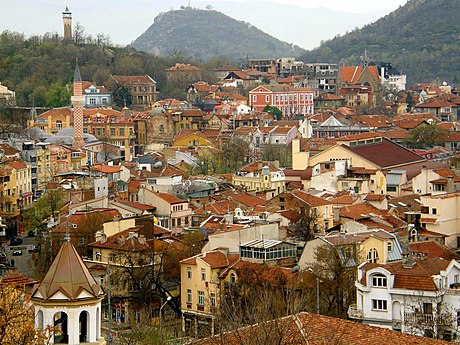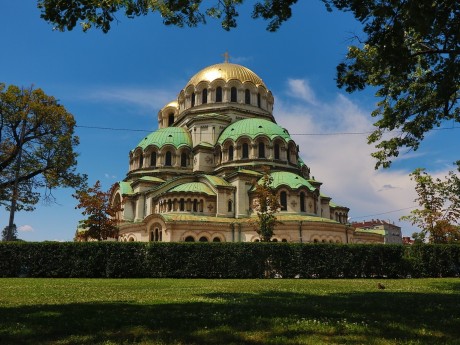Bulgaria: Sofia, Plovdiv & Varna
Embark on an adventure to Bulgaria, one of Europe’s oldest nations. In Sofia, the capital, behold the majestic St Alexander Nevsky Cathedral and explore the National Palace of Culture and Borisova Gradina Park. Day trips to Rila National Park, Pirin National Park and Belogradchik Fortress, are recommended. The trip continues to Plovdiv highlighted by the ancient theatre of Philippopolis. A short drive from the city lies the stunning Assen's Fortress in the Rhodope mountains.
Read more
Embark on an adventure to Bulgaria, one of Europe’s oldest nations. In Sofia, the capital, behold the majestic St Alexander Nevsky Cathedral and explore the National Palace of Culture and Borisova Gradina Park. Day trips to Rila National Park, Pirin National Park and Belogradchik Fortress, are recommended. The trip continues to Plovdiv highlighted by the ancient theatre of Philippopolis. A short drive from the city lies the stunning Assen's Fortress in the Rhodope mountains. Plovdiv also sits less than 2 hours away from Koprivhista, a beautiful historic town, and the Buzludzha Monument, an abandoned communist monument with UFO styled architecture. End your trip in Varna, known for its golden sand beaches on the Black Sea. Enjoy Primorski-Park, the largest landscaped park in the Balkans as well as the city's many historical monuments ranging from Roman baths to Soviet concrete sculptures. Unwind at Sunny beach and enjoy water sports, sand dunes and vibrant nightlife. Renting a car is recommended to see it all at your own pace! Waterviews strives to offer accommodation options within walking distance of water and/or in an area of touristic interest. Our prices include taxes (but excludes local tourist taxes). Customize your trip to your personal preferences with optional activities (hit the “Add Activities’’) or change hotels, etc. Contact us for customization at no extra cost at: Service@waterviewstravel.com
Destinations
- Sofia
- Plovdiv
- Varna
Itinerary
Sofia

Sofia (София) is the capital of Bulgaria. It is also the biggest city in the country with about 2 million citizens (including suburbs). Today, Sofia is a dynamic European capital, distinguished by its unique combination of European and Communist-style architecture as well as many beautiful Orthodox churches. Furthermore, it claims to be one of the few European capitals with beautiful scenery and a developed ski-resort so close to it - the Vitosha mountain.
Read more
Sofia (София) is the capital of Bulgaria. It is also the biggest city in the country with about 2 million citizens (including suburbs). Today, Sofia is a dynamic European capital, distinguished by its unique combination of European and Communist-style architecture as well as many beautiful Orthodox churches. Furthermore, it claims to be one of the few European capitals with beautiful scenery and a developed ski-resort so close to it - the Vitosha mountain.
Additional Information
History
Sofia was founded around 2,500 years ago. Over the centuries, it has been given several names — Serdika, Sredets and the remains of the old cities can still be viewed today.
Near Sofia lies Boyana church, which is one of the most valuable memorials of Bulgarian and European culture. The church has frescoes, acclaimed by specialists as the best examples of eastern medieval art from the 13th century AD.
The decline of Sofia during the Turkish Ottoman Empire was followed by the rejuvenation after the Russian liberation in 1878, when Sofia was chosen as the capital of Bulgaria at the First National Constituent Assembly, and followed by a brisk and straightforward period of construction.
© Sourced from Wikivoyage
Plovdiv

Plovdiv (Bulgarian: Пловдив) is the second-largest city in Bulgaria, and second oldest (if not the oldest) city in Europe. It is located in the large plain between the Rhodope Mountains on the south and the Balkan Range (Stara Planina - "Old Mountain") that runs through the center of Bulgaria to the north. Both ranges are visible on clear days. The Maritsa River flows through the city on its way southeast before forming the Greek/Turkey border to the Aegean Sea.
Read more
Plovdiv (Bulgarian: Пловдив) is the second-largest city in Bulgaria, and second oldest (if not the oldest) city in Europe. It is located in the large plain between the Rhodope Mountains on the south and the Balkan Range (Stara Planina - "Old Mountain") that runs through the center of Bulgaria to the north. Both ranges are visible on clear days. The Maritsa River flows through the city on its way southeast before forming the Greek/Turkey border to the Aegean Sea.
Additional Information
Plovdiv is debatably the oldest continually inhabited city in Europe, with a history traced back to 6000 BC. Originally it had seven tall hills, some of which were used for quarries. It was originally a Thracian settlement by the name of Eumolpias. The city has changed its name many times with new settlers and rulers: from Philippoupolis and Pulpudeva ("the city of Philip", the father of Alexander the Great), through Trimontium ("the three hills"), to Pəldin, Pləpdiv (Плъпдив) and Plovdiv. They also left their marks behind: there are several Roman ruins that can be seen in or near the city center area. During the long occupation by the Ottoman Empire, a large mosque, still present, was built in the center of the city. During Communist times, a statue of the unnamed Russian soldier was erected on one of the three main hills which overlook the city.
Today, Plovdiv is a famous tourist destination itself and also serves as a gateway to many other points of interest. Plovdiv is well known for hosting the Plovdiv International Fair twice a year and for its ancient, medieval and enlightenment sites.
When you are in Plovdiv, you can get help and more information about the city from one of the two tourist information centers in the city. The first one is located in the middle of the city, right next to the post office; when arriving in the city via train or bus through the "Yug" or "Rhodope" stations, this is one of the first buildings you'll come across in the city center. The second one is located in the Old City, on its main street (Saborna St), close to the Ethnographic museum and the beautiful church of Saint Konstantin and Elena.
Tourist information centers can help you with all kinds of information including city maps, information about concerts, bus and train schedules, and finding a place to sleep.
Plovdiv is a "European Capital of Culture" for 2019, an honour it shares with Matera.
© Sourced from Wikivoyage
Varna
Varna (Bulgarian: Варна) is the third-largest city in Bulgaria after Sofia and Plovdiv. Commonly referred to as the marine (or summer) capital of Bulgaria, Varna is a major tourist destination, business and university centre, seaport, and headquarters of the Bulgarian Navy and merchant marine.
Read more
Varna (Bulgarian: Варна) is the third-largest city in Bulgaria after Sofia and Plovdiv. Commonly referred to as the marine (or summer) capital of Bulgaria, Varna is a major tourist destination, business and university centre, seaport, and headquarters of the Bulgarian Navy and merchant marine.





